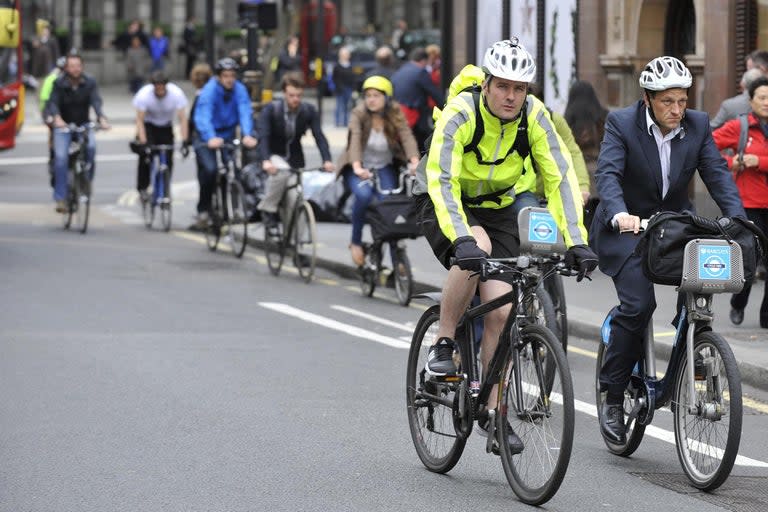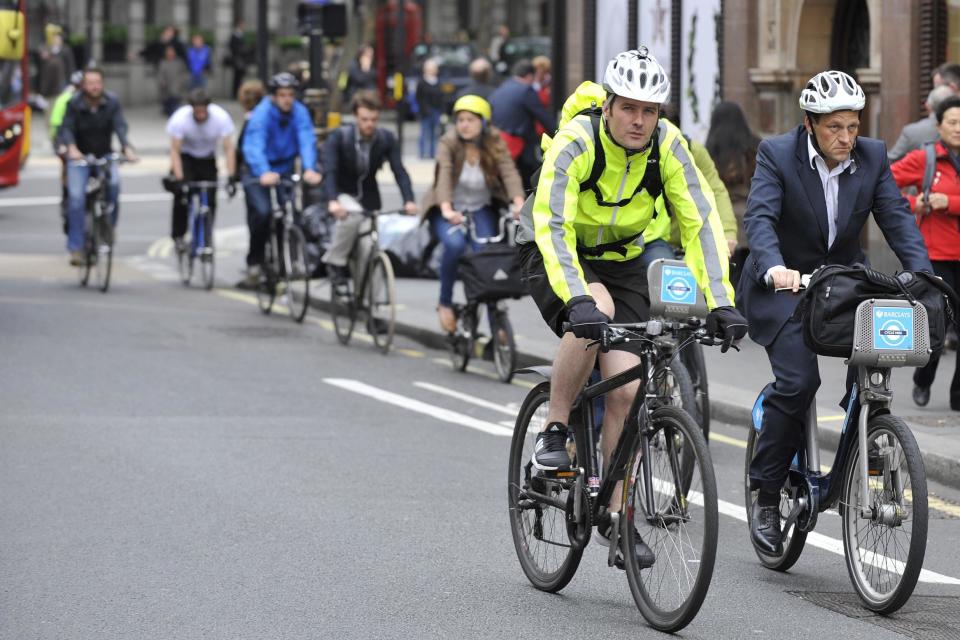Inner London boroughs top 'healthy streets' league as suburbs accused of failing to put people before cars
Inner London boroughs were today praised for having the “healthiest streets” — with the suburbs accused of failing to put people before cars.
Transport campaigners ranked the capital’s 33 boroughs by using official data that highlighted their progress — or lack of it — on reducing car use and road danger, improving air quality and encouraging walking, cycling and use of public transport.
The City of London was ranked best, followed by Tower Hamlets, Camden, Hackney and Islington. Havering and neighbouring Redbridge were worst, followed by Bexley and Bromley.
Borough councils are key to improving the environment as they control 95 per cent of the capital’s roads.
Capital's top 10 healthy boroughs
1 City of London
2 Tower Hamlets
3 Camden
4 Hackney
5 Islington
6 Hammersmith & Fulham
7 Southwark
8 Westminster
9 Lambeth
10 Haringey
Kensington and Chelsea was rated the worst of the inner London boroughs. The Tory borough last month blocked Transport for London’s plans for a £42 million segregated cycle lane in Holland Park Avenue and Notting Hill Gate.
TV and radio presenter Jeremy Vine wrote to council leader Elizabeth Campbell last week to tell her the borough’s roads were an “absolute disgrace” and that the main routes through Holland Park, Notting Hill and Kensington were no longer fit for purpose in a modern city.
Ms Campbell replied that the “door was open” to TfL to suggest fresh plans. She said making changes that suited residents and people travelling through the borough was a “personal priority”.
Tower Hamlets, despite having the capital’s busiest roads, was ranked second best because of low car use and high use of public transport. Westminster, Tower Hamlets and Enfield had the longest lengths of segregated cycle lanes.
However, attempts by Tower Hamlets to create “healthy streets” in polluted Bow were scrapped after a day.
A pilot scheme that used a bus “gate” to prevent cars, vans and taxis using Antill, Coborn and Tredegar Roads was abandoned after protests from drivers.
The scorecard was drawn up by London Living Streets, London Cycling Campaign, CPRE London, RoadPeace, Sustrans and Campaign for Better Transport London.
The proportion of trips made by public transport, walking or cycling ranged from 41 per cent in Hillingdon to 85 per cent in Hackney.
Hackney had the highest number of people cycling at least five times a week (56 per cent) and installed the greatest number (84) of “modal filters” — pillars that block vehicles but allow cyclists to pass. Kensington and Chelsea has two.

 Yahoo News
Yahoo News 

